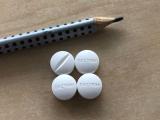Over the last several years, whole-genome sequencing (WGS) has become an essential tool for helping hospitals identify outbreaks of healthcare-associated bacterial infections. But a new study suggests it's potential for stopping outbreaks has yet to be fully tapped.
The study, published yesterday in Clinical Infectious Diseases, describes what researchers found when they started performing sequencing of patient isolates on a weekly basis at a University of Pittsburgh Medical Center (UPMC)-affiliate hospital to proactively identify healthcare-associated outbreaks and stop them in their tracks. Over a period of 2 years, they found that implementation of prospective WGS surveillance, accompanied by real-time infection prevention and control (IP&C) interventions, stopped further transmission in most of the outbreaks that were identified and acted upon.
The study authors say the findings highlight how broad implementation of genomic surveillance in healthcare can prevent infections, improve outcomes, and strengthen patient safety.
Prospective versus reactive genomic surveillance
In the study, researchers at the University of Pittsburgh analyzed the performance of the Enhanced Detection System for Healthcare-Associated Transmission (EDS-HAT), which was implemented at UPMC Presbyterian Hospital in November 2021. The rationale behind EDS-HAT, lead study author Alex Sundermann, DrPH, explains, was to take a different approach to using WGS for outbreak detection.
Traditionally, hospitals have used WGS reactively, conducting sequencing to identify genetic links between patients' bacterial infections only after an increase in infections has already been observed. WGS can confirm suspected outbreaks by identifying genetic links between infected patients even when there's no obvious epidemiologic link, like being on the same hospital unit. But Sundermann says reactive WGS isn't timely and is often inaccurate.
"A cardiothoracic ICU nurse or an infection preventionist will say, 'we've had ten C difficile cases in the past month, that's a lot, so let's sequence them,'" Sundermann told CIDRAP News. "But plenty of times, we do sequencing, and there's not even an outbreak."
Reactive WGS can also miss under-the-radar outbreaks, as Sundermann and his colleagues observed in a previous study conducted at UPMC. In the retrospective study, they found that EDS-HAT detected outbreaks and transmission routes that were missed by the traditional practice of using WGS in reaction to a suspected outbreak.
"So with that evidence, we decided to do genomic surveillance of our bacteria in real time and actually make interventions to see if we can stop the outbreaks, because we know how big these outbreaks can get when we don't do anything and we're just sequencing," he said.
Real-time surveillance under EDS-HAT involved collecting and sequencing healthcare-associated clinical bacterial isolates on a weekly basis. Patients with clinical cultures that were positive for selected bacterial pathogens were included if the patient had been in the hospital for 3 or more days or had UPMC healthcare exposure in the prior 30 days. Among the pathogens of concern Acinetobacter baumannii, extended-spectrum beta-lactamase–producing Escherichia coli, and methicillin-resistant Staphylococcus aureus.
When sequencing identified two or more patients with closely-related bacterial isolates, the IP&C team was alerted. Once they found the source, they initiated further actions to stop transmission. Targeted interventions included notification and education of staff, enhanced cleaning efforts, hand-hygiene and personal protective equipment compliance, and enhanced microbiologic surveillance.
We found that when we do these interventions, 95% of the time we stop the outbreak completely.
From November 2021 through October 2023, 3,921 unique patient isolates were deemed healthcare-associated and underwent WGS. Of these isolates, 476 (12.1%) were found to be related to at least one other isolate and were considered outbreak isolates, with 292 (61.3%) having an identified epidemiologic link. A total of 172 outbreaks were identified, ranging in size from 2 to 16 patients.
Among the 114 outbreaks in which the IP&C team identified a transmission route and intervened, 109 (95.6%) had no further transmission on the intervened transmission route.
"We found that when we do these interventions, 95% of the time we stop the outbreak completely," Sundermann said.
Sundermann and his colleagues also found that the real-time interventions prevented 62 outbreaks and five deaths over the 2-year period compared with what would have happened had they not implemented EDS-HAT, while also saving an estimated $700,000—a more than 3-fold return on investment.
"Implementation of real-time WGS surveillance in routine IP&C practice is a paradigm shift that has the potential have substantial clinical impact and cost-savings," the study authors wrote.
Expanding the use of prospective WGS
The hope now is that other health systems adopt EDS-HAT, or a similar prospective WGS surveillance system. Sundermann and his colleagues also suggest that a nationwide genomic surveillance system could be created to identify and stop outbreaks both within and between healthcare facilities that are linked to patient movement. They liken it to the Centers for Disease Control and Prevention's PulseNet, which has helped identify and stop multistate outbreaks of foodborne illness.
Sundermann said researchers at other healthcare systems who have studied prospective genomic surveillance have found similar benefits. And while cost, technical expertise, and infrastructure are potential barriers that will need to be addressed—particularly for smaller suburban and rural hospitals that aren't affiliated with an academic health center like UPMC—he hopes that the findings will encourage other hospital systems to consider it.
"We all agree that this can prevent infections and save lives," he said. "Now it's just about how do we actually translate it from what was a research tool to an actual application for clinical practice."

























